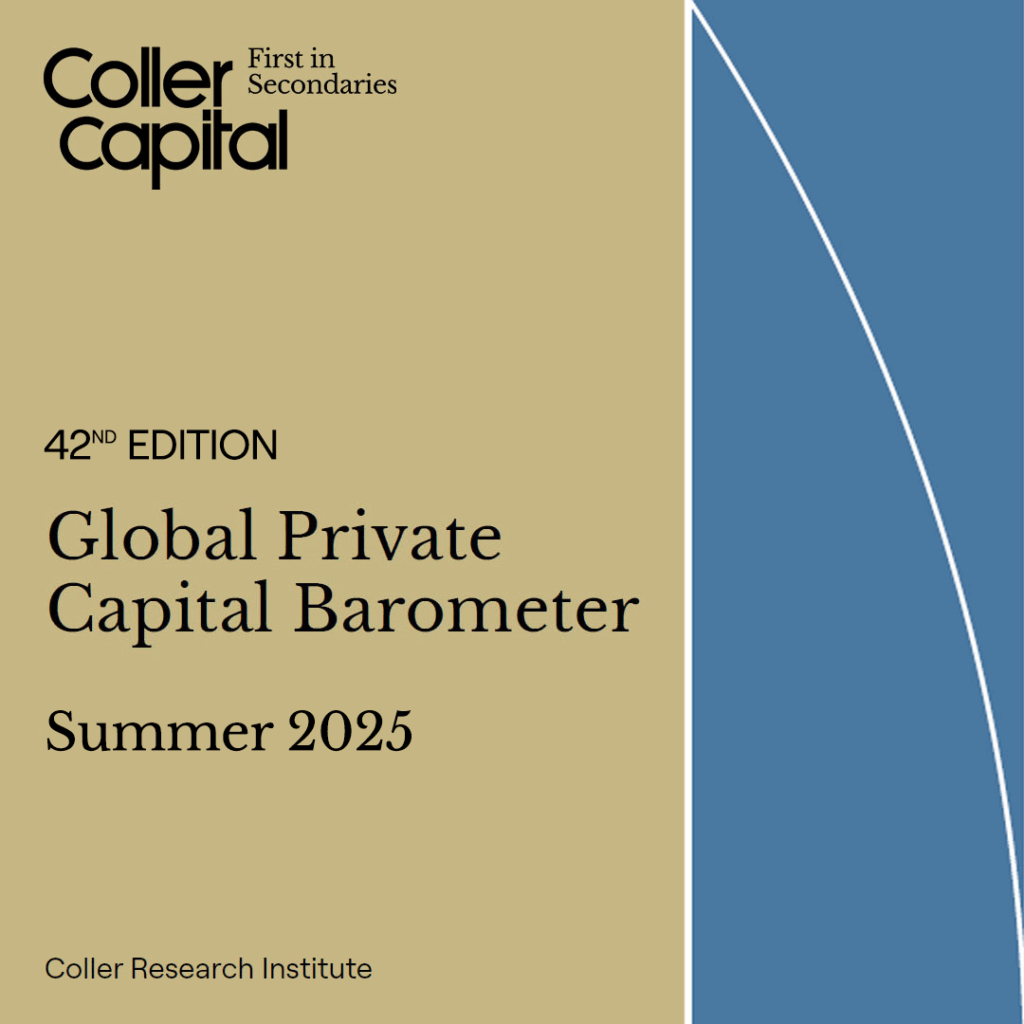- Coller Capital data shows that allocations to private credit and secondaries are set to rise in the next year, reflecting investors’ desire for strategies that can offer resilience to volatility.
- Investors have a heightened focus on geopolitical risk when it comes to portfolio construction.
- A third of LPs expect new managers to outpace industry consolidation.
- The volume of secondary market dealmaking is set to grow, and investors expect a rise in private credit GP-led transactions.
London & New York – Monday, 16 June 2025 – Investors (Limited Partners or LPs) are planning to increase private credit and secondaries allocations amid growing macro-economic uncertainty, reflecting a shift toward more defensive investment strategies, according to Coller Capital’s latest Global Private Capital Barometer.
The 42nd edition of Global Private Capital Barometer captured the views of 110 private capital investors from around the world. In total, the investors surveyed oversee a combined $2 trillion in assets under management.
The research found that, over the next 12 months, almost half (45%) of LPs plan to increase their allocation to private credit, which is up from 37% six months ago. Meanwhile, more than a third (37%) plan to increase their allocation to secondaries, compared to 29% in December 2024. While 28% expect to increase their allocation to private equity – a decline from 34% in the space of six months – just one in 10 (10%) plan to reduce their allocation here.
Geopolitical instability and trade tensions have created a more uncertain backdrop for investing. Amid an increasingly complex global landscape, 44% of LPs report that their institutions have a heightened focus on geopolitical risk as a key factor in portfolio construction. Almost nine in 10 (88%) of LPs said geopolitical factors represent a significant risk to returns over the next two to three years.
Jeremy Coller, Chief Investment Officer and Managing Partner of Coller Capital, commented: “New challenges call for new strategies, so as the world continues to confront increased geopolitical and economic uncertainty, it’s no surprise that investors are exploring alternative options to deliver returns. As Coller Capital’s 42nd Global Private Capital Barometer shows, LPs are continuing to increase their interest in private credit and secondaries and making new forays into evergreens. Once again, our Barometer offers an unrivalled look at the prevailing sentiments of the global investor community, and we are delighted to share the compelling insights it provides on the present and future of private capital markets.”
Further themes highlighted in this edition of the Barometer include:
Investors to seek liquidity opportunities amid tight exit environment
Secondaries transaction volume hit $160 billion in 2024 and the space is still showing strong signs of growth.[1]
Two thirds (65%) of LPs believe the volume of private credit GP-led transactions will increase in the next two to three years as more private credit funds approach the mid-to-late stages and sponsors look to provide liquidity. Among respondents, North American investors held the strongest expectation of such an increase, with three quarters (74%) sharing this view.
Meanwhile, activity in the private equity secondaries market is strong. More than half (54%) of LPs say that they are likely to buy and/or sell private equity assets in the secondary market in the next two years. This comes as continuation vehicles, particularly single-asset structures, perform well. Almost half of LPs (47%) with investments in single-asset continuation vehicles say that they are performing above or in line with expectations. Nearly half (49%) say it is too early to tell.
More than a third of LPs expect new manager formation to outpace industry consolidation
More than a third (36%) of LPs say they have seen the number of spin-out firms within their private markets portfolio increase in the last two to three years. Many expect this to continue; more than a third (38%) anticipate that new manager formation will outpace industry consolidation in the coming years.
This rise in new spin-outs is likely to be driven by high performers from established investment teams deciding to set up their own firms. The research shows that more than one in four LPs (28%) believe that GPs aren’t doing enough to nurture their home-grown talent and retain future stars.
Meanwhile, 71% of investors expressed that the trend towards mega-funds will represent a challenge in terms of meeting performance expectations. One third (33%) of investors believe that less than half of their top ten largest private capital GPs (by funds committed) will still be in the top ten in a decade’s time, suggesting LP loyalty should not be taken for granted.
Institutional LPs expanding investment exposure to evergreen vehicles
More institutional LPs are set to embrace evergreen vehicles which have traditionally been used by retail and wealth investors looking to access the liquidity and flexibility that they afford. More than one in five (21%) will maintain or expand their exposure to private equity evergreen funds over the next three years while one in ten (10%) say that they will start to evaluate such vehicles. At the same time, more than one in five (22%) say they will maintain or expand their exposure to private credit evergreen funds over the next three years. More than one in ten (11%) say that they will start to evaluate such vehicles.
Private capital goes to Hollywood
As private equity firms continue to target the wealth market and connect with a wider audience, more than a quarter (27%) of LPs expect to see more firms collaborate with celebrities, sports personalities and influencers in a bid to boost their brand awareness and broaden their public recognition.
[1] Evercore, FY 2024 Secondary Market Review

